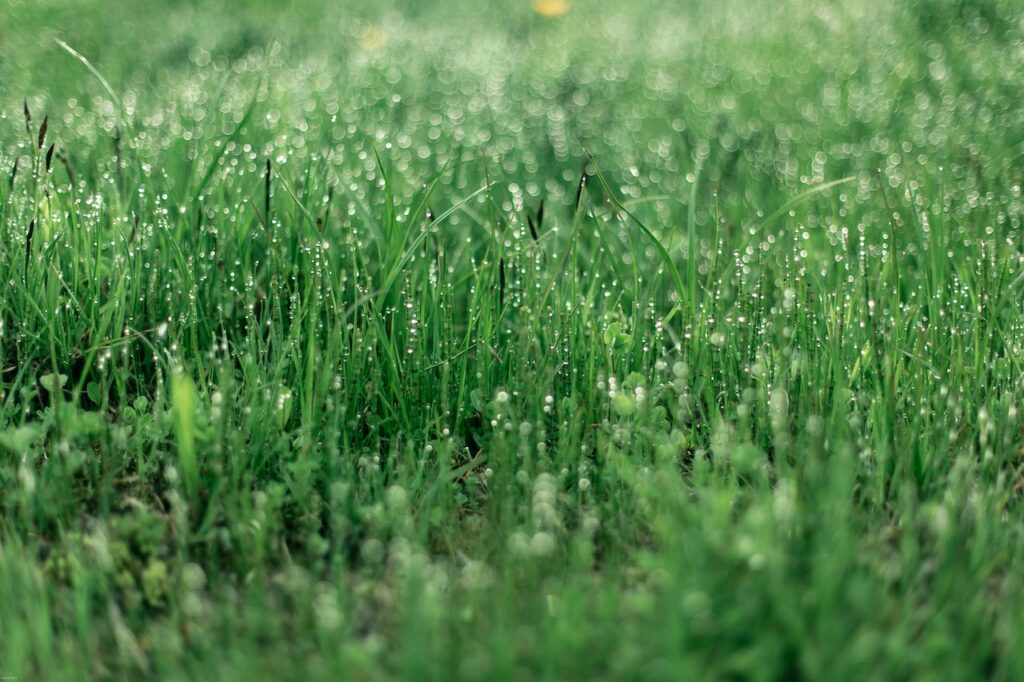A lush, green lawn is the envy of many homeowners, but achieving and maintaining it requires more than just regular mowing and occasional fertilization. One of the most common mistakes people make when caring for their lawns is either overwatering or underwatering. Finding the delicate balance between these two extremes is essential for nurturing a healthy, vibrant lawn. In this comprehensive guide, we’ll explore the signs, consequences, and solutions for overwatering and underwatering, helping you achieve the lawn of your dreams.

The Importance of Proper Lawn Watering
Water is a fundamental component of a thriving lawn. It helps plants perform essential functions, including nutrient uptake, photosynthesis, and temperature regulation. However, like many things in life, moderation is key when it comes to watering your lawn.
Signs of Overwatering
- Soggy Soil: One of the most evident signs of overwatering is consistently soggy soil. If your lawn feels squishy underfoot, it’s a clear indication that you’re providing too much water.
- Mushrooms and Algae Growth: Excess moisture can create ideal conditions for mushrooms and algae to flourish in your lawn.
- Yellowing Grass: Paradoxically, overwatered grass can turn yellow. This happens because excessive water prevents roots from getting enough oxygen, leading to nutrient deficiencies.
- Weed Growth: Overwatering can promote weed growth since many weeds thrive in moist conditions.
Consequences of Overwatering
- Root Rot: Prolonged overwatering can lead to root rot, a fungal disease that can kill grass from the roots up.
- Wasted Resources: Overwatering not only wastes water but also your time and money spent on water bills and lawn care.
Solution for Overwatering
The solution for overwatering is straightforward: reduce the frequency and duration of your watering sessions. Aim to water deeply but less often. Ensure your lawn receives about 1-1.5 inches of water per week, either from rainfall or irrigation.
Signs of Underwatering
- Dry, Cracked Soil: When you notice your soil is dry, cracked, or pulling away from the edges of your lawn, it’s a sign that you’re not providing enough water.
- Dull and Gray Grass: Underwatered grass becomes dull and takes on a grayish tint. It may also wilt or curl to conserve moisture.
- Slow Growth: A lack of water inhibits grass growth. If your lawn isn’t thriving, insufficient watering could be the culprit.
- Footprints Remain: If your footprints remain visible on your lawn for an extended period, it indicates that the grass lacks moisture.
Consequences of Underwatering
- Stunted Growth: Underwatered lawns often suffer from stunted growth, making them more susceptible to pests and diseases.
- Thinning Grass: Grass that doesn’t receive enough water can thin out, leading to the development of bare patches.
Solution for Underwatering
The remedy for underwatering is to establish a consistent watering schedule. Water deeply and less frequently, preferably during the early morning or late evening to reduce evaporation. Ensure your lawn receives adequate hydration to promote healthy root growth.
Finding the Right Balance
Achieving the right balance between overwatering and underwatering involves several key steps:
- Know Your Grass Type: Different grass species have varying water requirements. Understand your grass type and its specific needs.
- Invest in a Rain Gauge: A rain gauge helps you measure how much water your lawn receives naturally, allowing you to adjust your irrigation accordingly.
- Monitor Soil Moisture: Use a soil moisture meter to gauge the moisture levels in your lawn’s root zone. This tool can provide precise data to guide your watering decisions.
- Adjust Based on Weather: Modify your watering schedule based on weather conditions. In periods of heavy rainfall, reduce irrigation, while in hot, dry spells, increase it.
- Water Early or Late: Water your lawn during the cooler parts of the day to reduce water loss through evaporation.
- Implement Proper Lawn Care Practices: Maintain a well-aerated lawn with a healthy thatch layer. This helps water penetrate the soil more effectively.
- Consult a Lawn Care Specialist: If you’re unsure about the specific needs of your lawn or how to balance watering properly, consider seeking advice from a professional lawn care specialist.
By finding the right balance between overwatering and underwatering, you can nurture a lawn that’s not only visually appealing but also resilient and healthy. Remember, your lawn’s water needs may vary throughout the year, so stay vigilant and adapt your watering habits accordingly. With patience and a keen eye, you can transform your lawn into a thriving, vibrant oasis that enhances the beauty of your home.
Comments